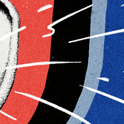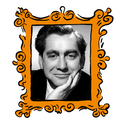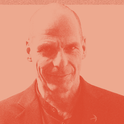There is an old video of Tim Walz that began doing the rounds a few months ago. It shows the Minnesota governor detailing how to mend the headlight connector on a 2014 Ford Edge. “Ford, this is unacceptable,” he says, sitting in the front seat, face crowding the phone camera. “It burned out hot on the connector.” He holds up the singed headlight harness and offers a $7.99, five-minute fix involving shrink wrap. Behind him, a glimpse of pale city sky and telegraph wires.
In the Midwestern fever that surrounded Walz’s announcement as Kamala Harris’s running mate, the 2018 video joined a mass of evidence supporting the governor’s image as a politician who is wholesomely and capably American: he can coach the football team; he can win a butter-carving contest; he can fix the truck.
“One of Tim Walz’s political talents is making the argument for big government with the aesthetic of small communities,” Ezra Klein noted on his New York Times podcast. “But he doesn’t argue it in the way that a Bernie Sanders might, or an AOC might, he argues it as an expression of small state, rural values.” Former house speaker Nancy Pelosi was more succinct: “I think he brings the heartland values,” she said, landing on a term that has long resonated with the American people.
“Heartland” is a nebulous concept. It was first coined in 1904 by the British geographer Halford Mackinder, who used it to describe the strategic centre of the Eurasian landmass. Only later did it transfer to the US, where it took hold in a way that was more ideological than geographical.
There isn’t an agreed location of the American heartland, but it exists firmly in the public imagination: somewhat of the Midwest, crisscrossing with the Bible Belt and the red states, taking in farmland, small towns, industrial centres. It is Rust Belt and breadbasket and flyover country. It has a Main Street and a water tower and the glow of a Thomas Kinkade painting. It carries a kind of workaday romance and an emotional heft.
The American heartland exists firmly in the public imagination
As such, its role in American politics is important. It connects to the Jeffersonian idea of rural America being the real America that has been played upon by most presidential candidates—from Ronald Reagan on his ranch to Bill Clinton’s dedication to smalltown Hope, Arkansas, and even Barack Obama’s casual mention of his grandparents on the plains of Kansas. It is the reason Joe Biden made much of Scranton, Pennsylvania, and now Harris—keen to distance herself from the west coast elite—likes to remind voters of the years she spent in Illinois and Wisconsin.
In 2016, Donald Trump’s Make America Great Again campaign drew on the power of this near-mythical destination, suggesting a country in the process of being eroded by coastal intellectuals, by Mexicans hopping the border, by a broader globalisation that would gnaw at its edges until it reached the nation’s pure, tender heart.
For all that it has become a political touchstone, the heartland has long been defined and sustained by America’s artistic output—from the regionalist art movement of the 1930s to Harlan Hatcher’s 1944 book The Great Lakes (which is largely credited with introducing the term) and on to more recent endeavours such as Chloé Zhao’s 2020 film Nomadland, the TV series Somebody Somewhere and any number of Hallmark movies.
But there have been few more rousing takes on this peculiar emotional geography than that provided by “heartland rock”. Guitar-driven, rootsy, unpolished in its delivery, the genre emerged out of the country and folk-rock scenes in the 1970s and came of age in the 1980s. With a few notable exceptions (Melissa Etheridge, Lucinda Williams), its practitioners are generally male, and include Bruce Springsteen, Bob Seger, John Mellencamp, Steve Earle, John Hiatt and the War on Drugs.
Heartland’s defining factor is its focus on smalltown life and the struggles, ambitions and pleasures of blue-collar workers, as opposed to city slickers or intellectuals. There are lay-offs at the factory, shotgun weddings, lives curtailed. There are true loves and fast cars and Saturday nights.
“Sing a song about the heartland,” ran George Strait’s 1987 hit “Heartland”. “The only place I feel at home/Sing about the way a good man/Works until the daylight’s gone.” We might note that Strait was singing when that daylight was fading, at the height of the deindustrialisation of the Rust Belt, with the closure of many of America’s automaker plants. Already his song, like many of the heartland rock genre, was charged with both a middle-American nostalgia and a kind of moral yearning.
Heartland rock has been the soundtrack to an uneasy time in America’s history—to a period of industrial decline, the dissolution of the nuclear family, the spread of distribution centre culture, the sense of disorientation that has affected many white, male Americans as their cultural dominance has begun to wane.
It is at once disillusioned and anthemic and, as such, it has been ripe for misappropriation—famously Reagan tried to harness the power of Springsteen’s “Born in the USA” for his 1984 re-election campaign, seemingly oblivious to the fact the song, for all its sonic ebullience, is actually a protest song, critiquing the treatment of a Vietnam war veteran.
“America’s future rests in a thousand dreams inside your hearts,” Reagan told a rally in Hammonton. “It rests in the message of hope in songs so many young Americans admire: New Jersey’s own Bruce Springsteen. And helping you make those dreams come true is what this job of mine is all about.” Springsteen, a solid Democrat, was unamused.
These are songs that yearn for a culture that no longer truly exists
Listen to heartland rock long enough, and you come to realise the peculiarity that lies at its core: these are songs that yearn for a culture that no longer truly exists and a place that has only ever existed in the imagination. We might liken it to a kind of blues, or a hiraeth, or saudade or tezeta. What matters more, somehow, is that it summons an active and unwavering sense of both belief and belonging.
Springsteen has long been frank about the level of fantasy involved in his songwriting. “I have never held an honest job in my entire life,” he told the audiences who flocked to his Broadway shows. “I have never done an honest day’s work. I’ve never worked nine to five. I’ve never done any hard labour. And yet it’s all that I’ve written about. I have become wildly and absurdly successful writing about something that I have no knowledge of.”
If pushed, he might concede that his automotive knowledge has been a little woolly at times, too. His track “Racing in the Street”, for instance, starts out with a bold claim: “I got a ’69 Chevy with a 396/Fuelie heads and a Hurst on the floor.” The petrolheads among you will be aware that there was no such thing as a fuelie head on a “big block” like a 396. And yet the song stands undiminished as one of the greatest examples of heartland rock.
The same might be said of the current run of political candidates as they scrabble for that crucial heartland vote, announcing new automotive deals for Detroit and telling of the dog-eating immigrants of Springfield, Ohio. In the end, to nod to the great John Hiatt, it comes down to who you put your faith in.
I don’t know much about the 2014 Ford Edge—I couldn’t tell you whether you could burn out its headlight connector and hope to fix it with a little shrink wrap and change out of 10 bucks. But I know it sure does help to believe.












